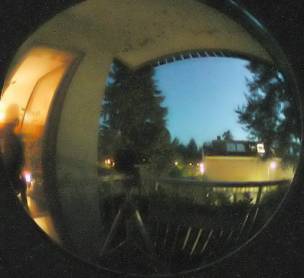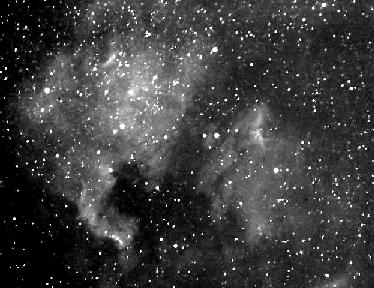
Urban
astrophotography (UAPCCD) with a MX7C CCD-camera.
Full
spectrum deep sky astrophotography in an urban area offers a challenge of Titanic
proportions. There is a way into this realm, however. Adding a narrowband Ha-filter
dramatically enhances the contrast in a lightpolluted, urban environment, enabling e.g.
HII-regions to be captured. Even when the Moon is up. An added bonus is a sharper focus,
which normally poses a problem with fast optics
(which I use). Although the camera allows colours to be handled, I prefer the b/w mode,
because the colouringprocess is not particularly smooth with this camera. In Ha not much
is gained with colour anyway.

All images included here are photographed from this balcony just 12 km
from the very centre of Stockholm (the capital of Sweden), if no other specific place is
stated. The picture shows the site at twilight.
As can be deduced from this picture, the observable area of the sky is somewhat limited by
trees, buildings, roofs, not to forget the street lighting!
|
This is
the simple equipment which enabled the pictures to be taken. It is
based on the Starlight Express MX7C colour CCD. My favorite lens is a Schneider-Kreuznach
Xenon 25 mm/F1,5. A FM (Flodqvist-Mattsson)
Wide Field Adapter makes this configuration possible. The Ha-filter (656,3 nm) has a FWHM
of 10 nm. |
|
# 1 |
|
|
|
The
Rosetta nebula stands out nice in this picture, together with some faint nebulosities
towards the Cone nebula. |
|
# 3 |
|
|
|
# 4 |
|
# 5 |
|
|
|
# 6 |
|
| # 7 NGC7000 captured with a 100 mm Minolta standard lens. The site is the very centre of the city: The Old Observatory of Stockholm! |
 |